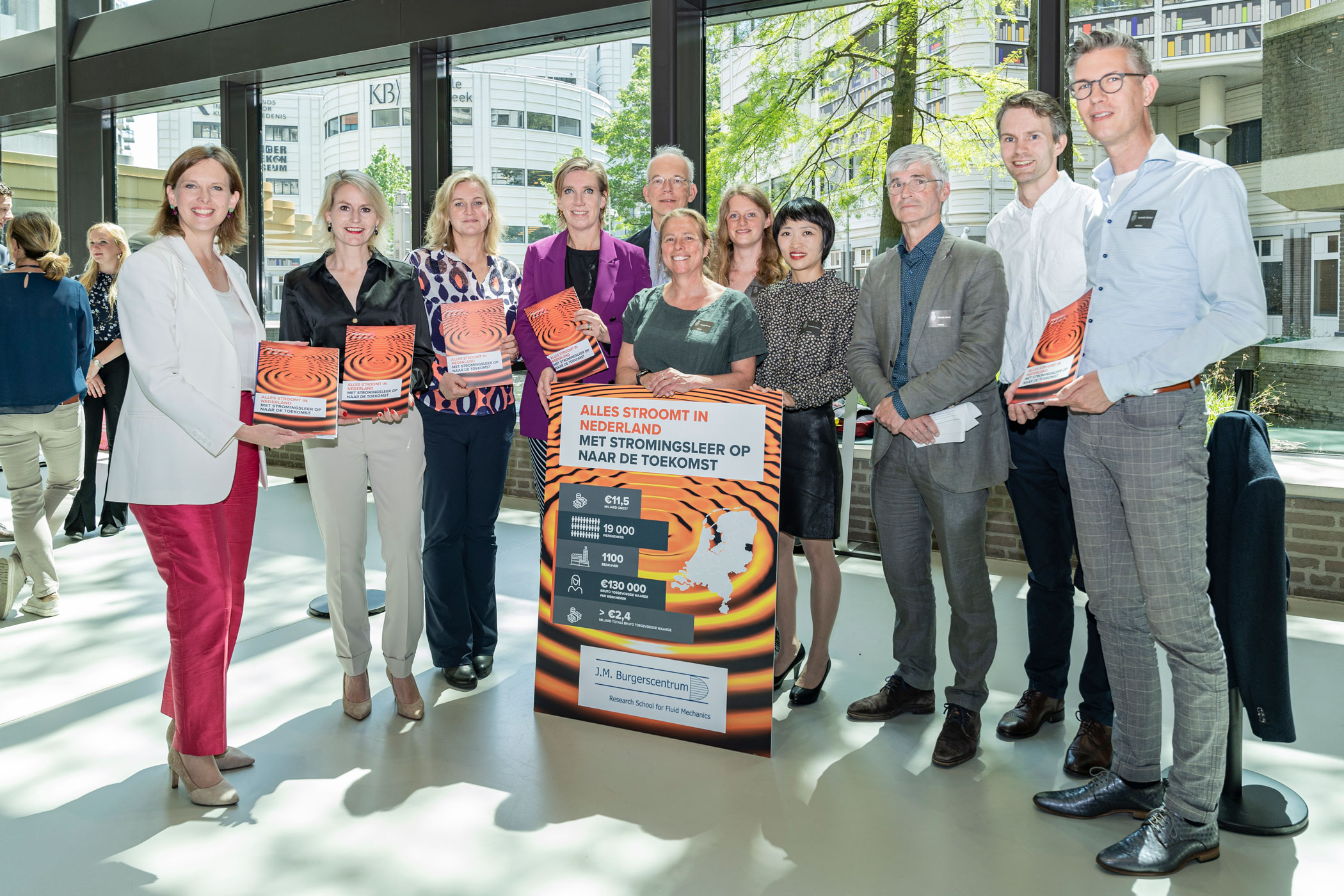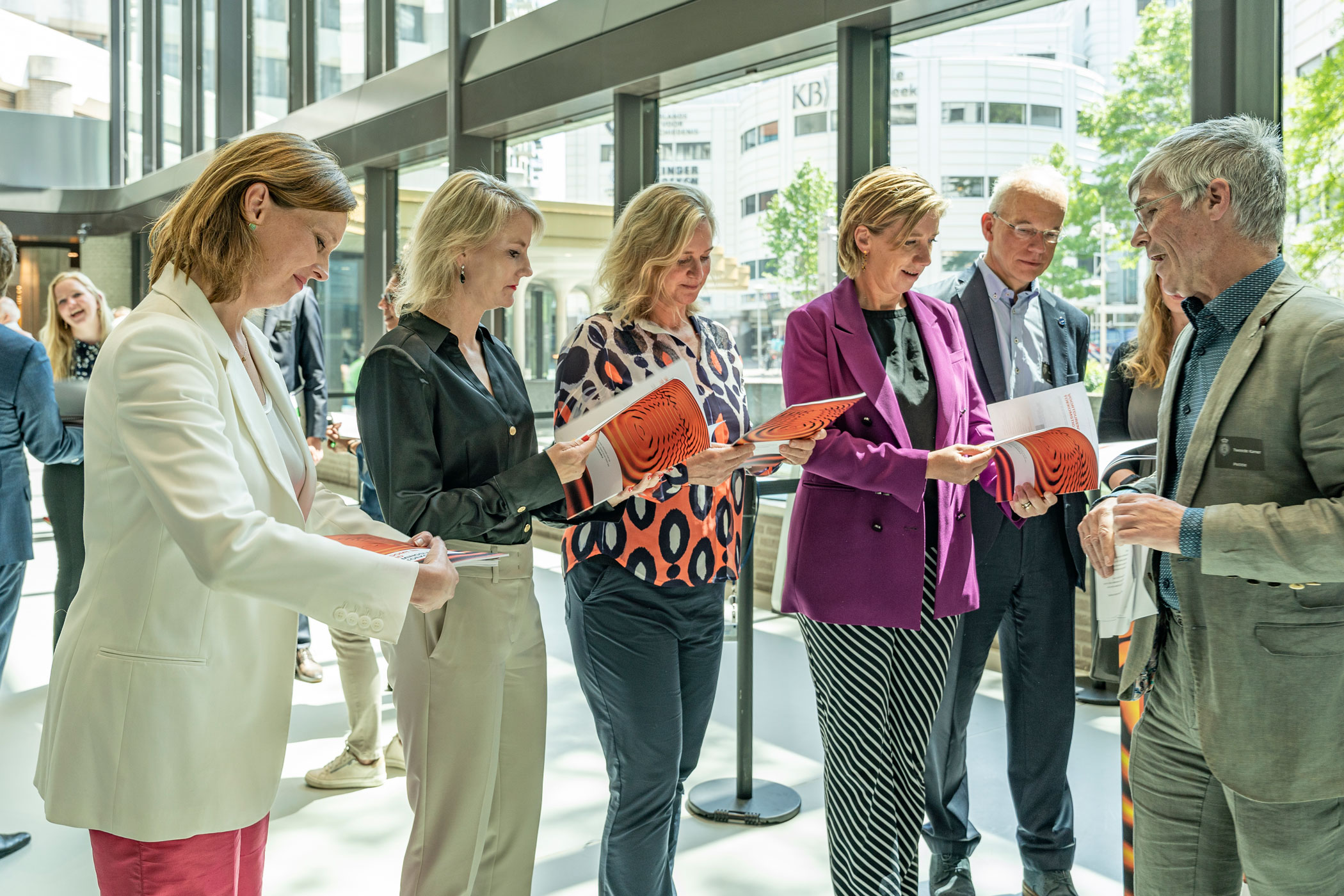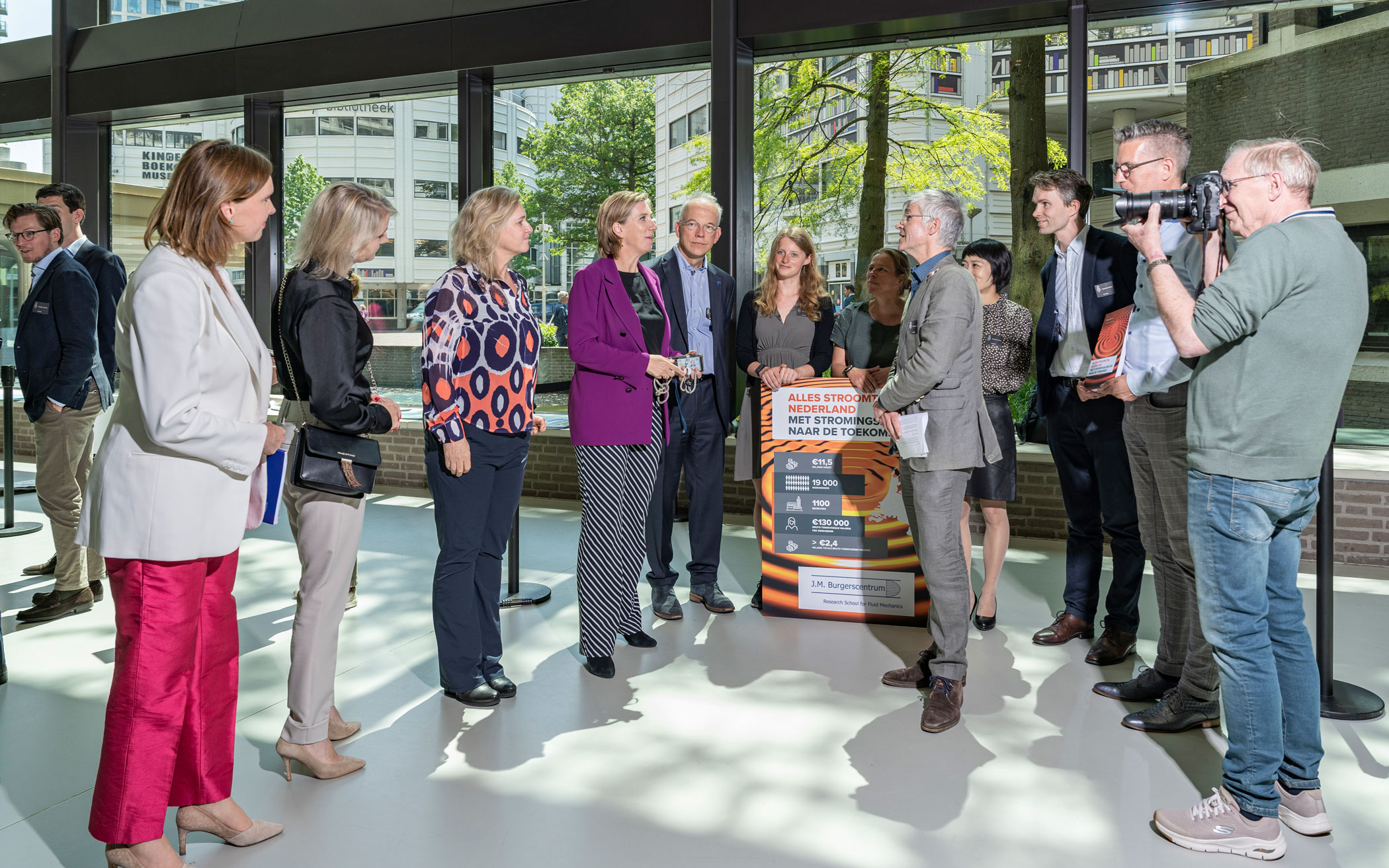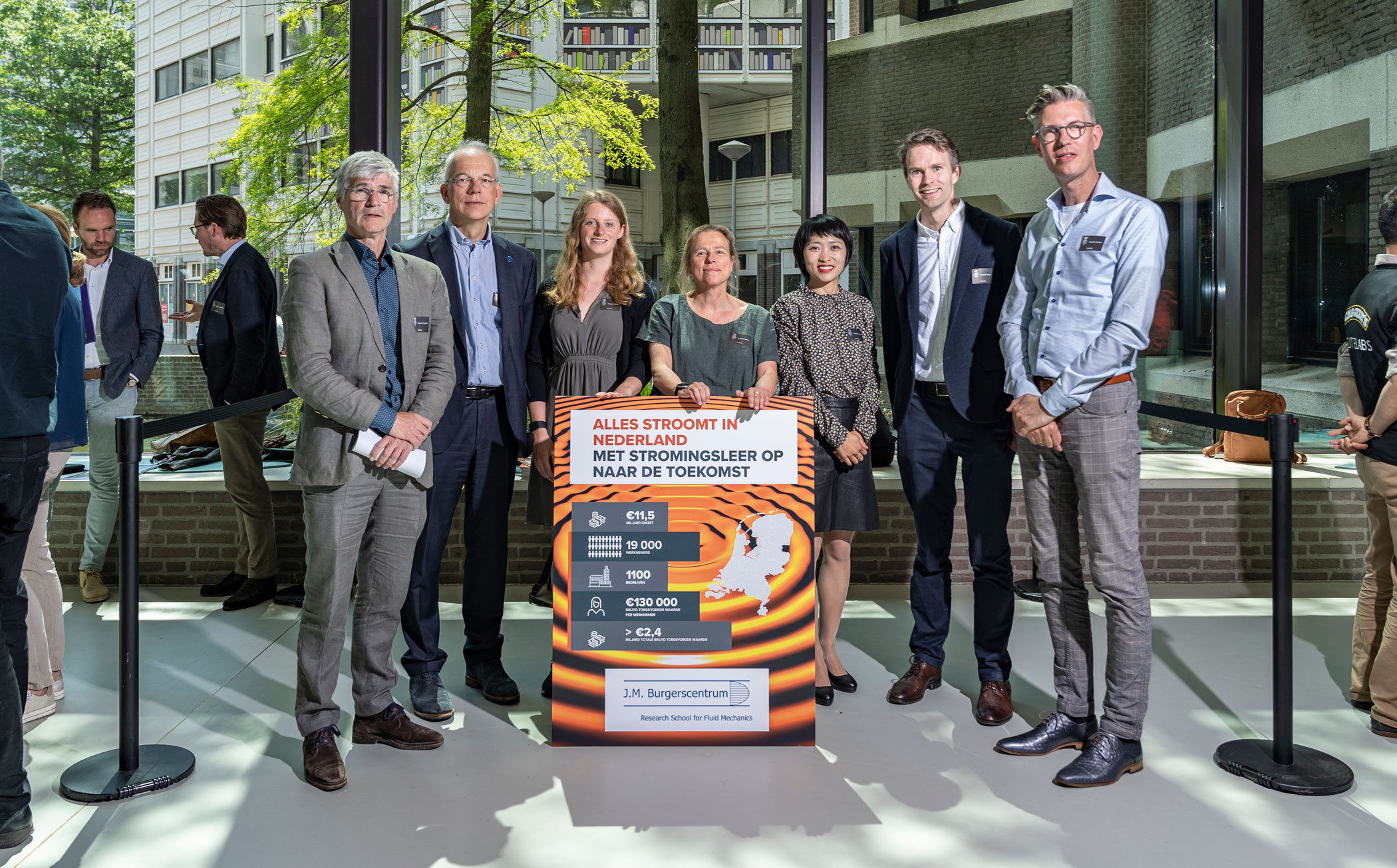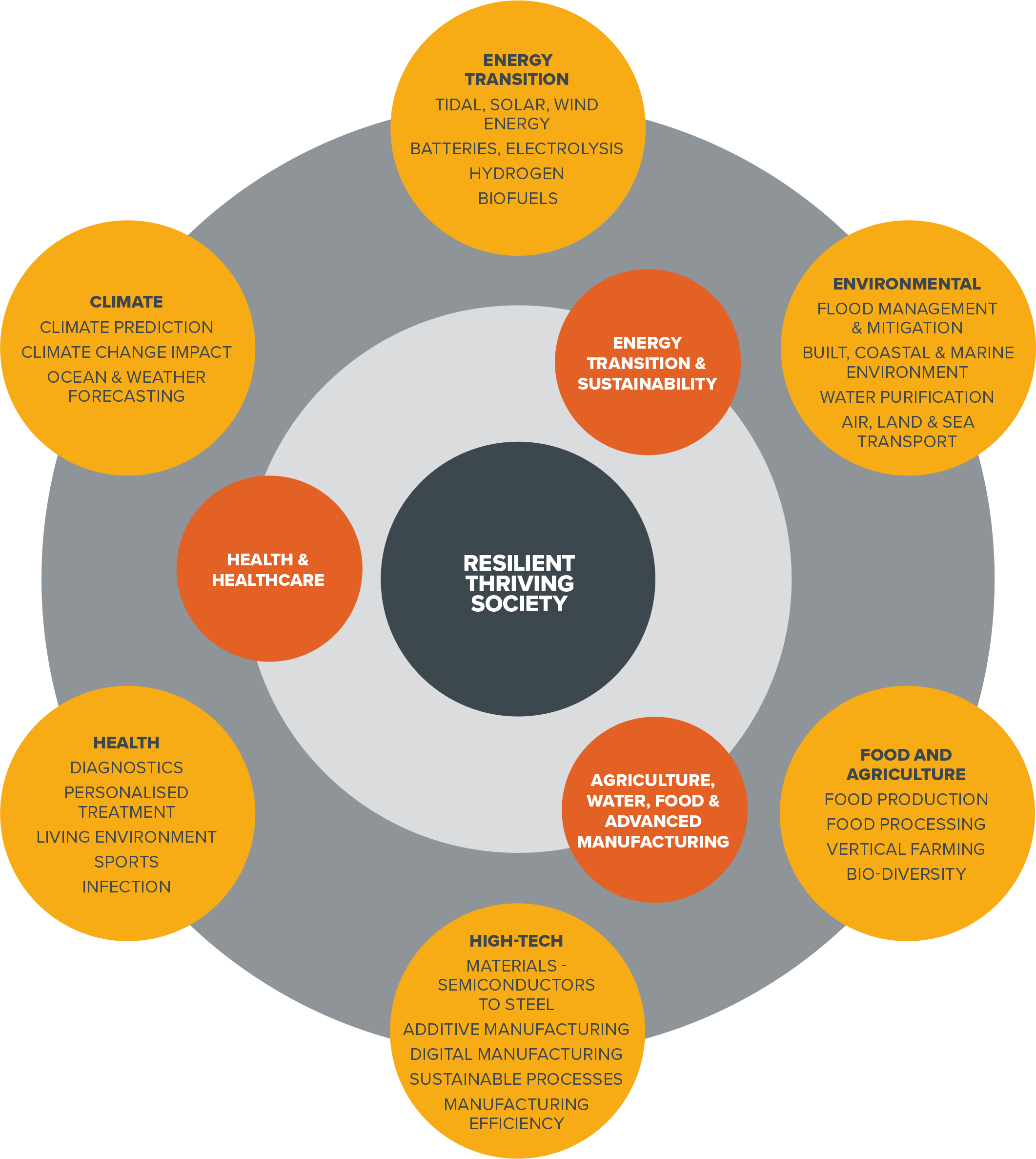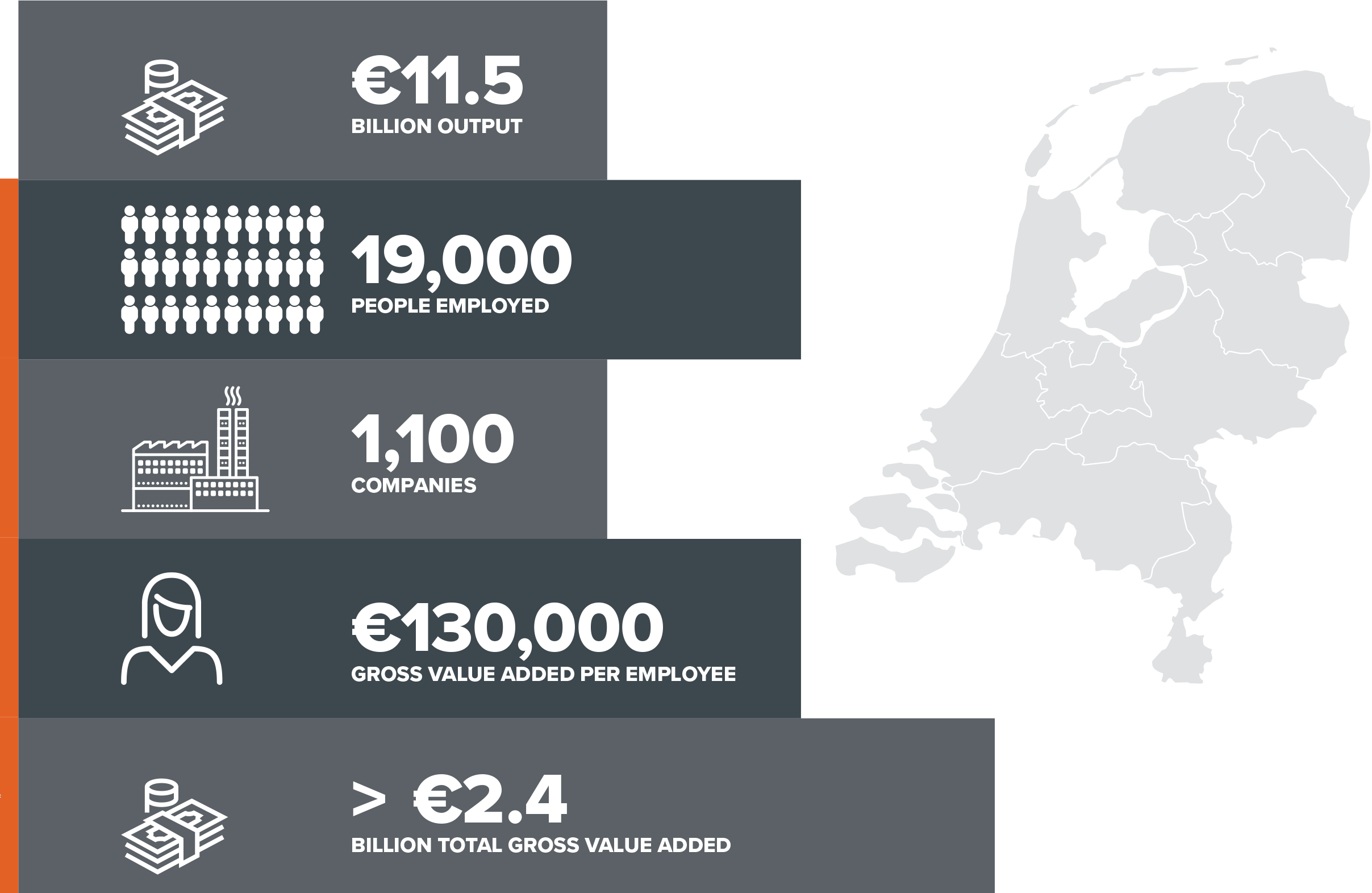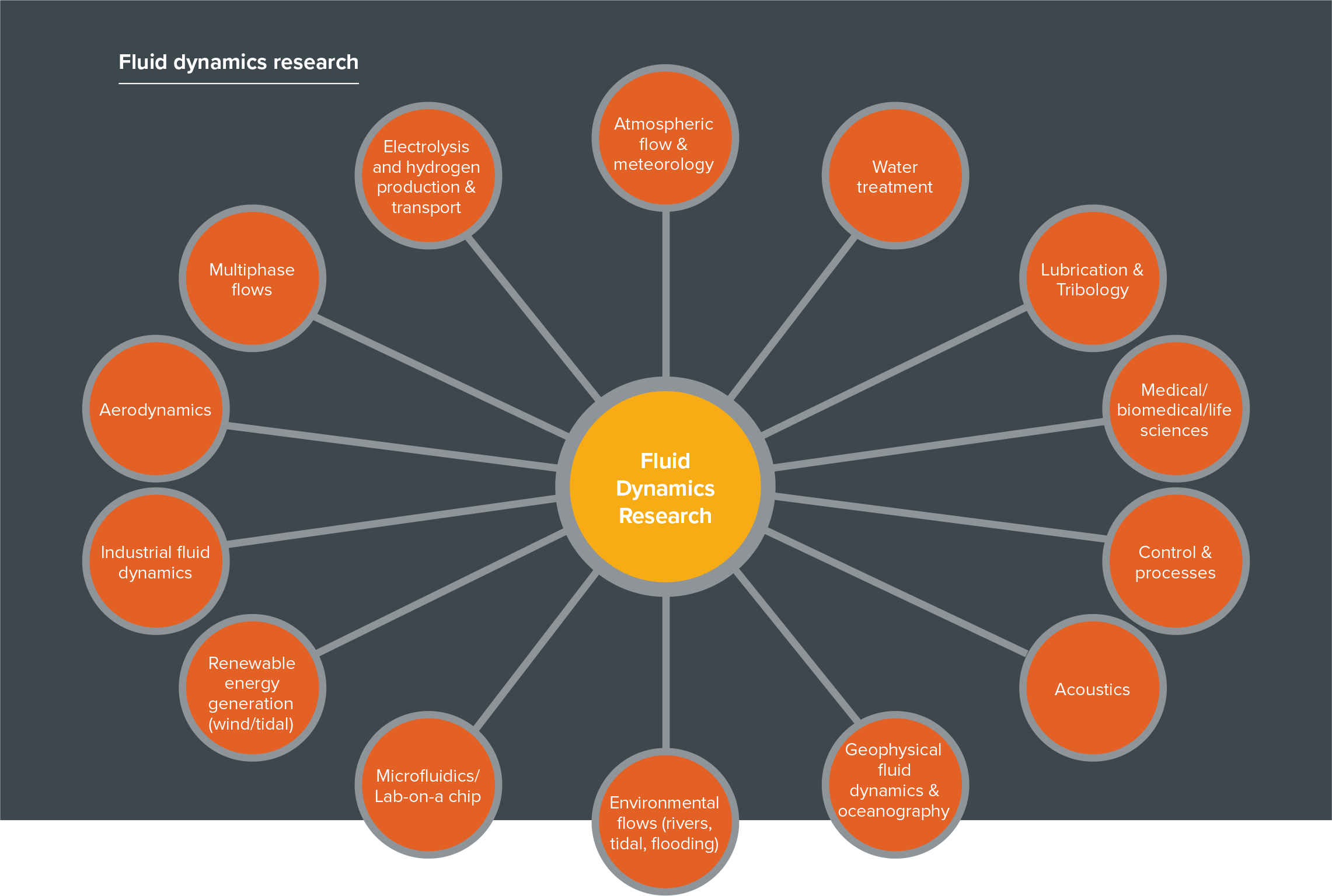FLOW TO THE FUTURE
FLUID DYNAMICS IN THE NETHERLANDS
Petition
On 6th June 2023, a delegation of the J.M. Burgerscentrum has offered the petition “Flow to the Future in the Netherlands” to parliament representatives in de ‘Tweede Kamer’ in The Hague who are in the committee for Education, Culture and Science.
What is fluid dynamics?
Fluid dynamics is the science and engineering of moving liquids, gases and particles. This includes predicting, controlling and measuring fluid flows at any speed and scale, from nano- to astrophysical. Applications range from blood flow and agriculture to lithography and industrial processes, to flow in buildings, the atmosphere, rivers, oceans, and stars.
Fluid dynamics will be a vital part of understanding and providing solutions to all major future societal challenges including:
- Climate change. Predicting warming and impacts of greenhouse gas emissions on the oceans, sea levels and weather.
- Environment. From water, river and flood management including pollution and water treatment. To the cooling heating and air management in buildings.
- Energy transition and energy security. Whether through tidal and wind energy, the hydrogen economy and biofuels, through to next generation batteries and high efficiency transport.
- High-tech manufacturing and high-tech materials. From semiconductors to additive manufacturing, 3D printing and bio-compatible production.
- Healthcare. From aerosol distribution of viruses, advanced micro-fluidic based diagnostics to personalised treatment and drug production.
- Agriculture and food production. Such as next generation indoor vertical farming, food production and processing ideal for exploitation in the Netherlands.
-
Fluid Dynamics will thus be critical for the future of Dutch society and the economy. Neglecting the role of fluid dynamics risks that future, and makes us vulnerable and dependent on others to provide critical fluid dynamics expertise and innovation.
Together we can harness the power of fluid dynamics for a prosperous, healthy, sustainable future in the Netherlands.
The Netherlands urgently needs:
- National recognition of cross-cutting roles of enabling technologies, especially fluid dynamics.
- A directorate focused on industrial adoption in the national J.M. Burgerscentrum.
- Strategic collaboration public platform funding of > €500 million over 5 years to expand industrial competitiveness.
- Expansion of fluid dynamics research to ensure long term scientific leadership in fluid dynamics.
- Increased fluid dynamics training at all levels to provide the expertise needed.
Application areas of fluid dynamics
Impact of Fluid Dynamics on three of the major societal themes and missions (highlighted in orange) for the future identified by the Dutch government.
Transitioning to sustainable energy sources requires a solid understanding of fluid flows. Predicting air flows over wind farms and clouds above solar farms will have significant impact on the energy yield and hence impact on the power grid. With planned expansion in the share of sustainable energy sources, fluid dynamics modelling for predicting and managing output will be essential for the stability of the Dutch energy grid.
For more traditional sources of energy fluid dynamics plays an essential role, illustrated by the abrupt change in 2022 from pipeline gas transport to liquified natural gas (LNG) in Europe, for which fundamental fluid dynamics understanding in the processing of LNG was vital. With the transition to sustainable energy, the convertibility of LNG infrastructure for later use with renewable energy carriers, such as hydrogen, ammonia, or biofuels is of particular importance and dependent on detailed understanding of fluid dynamics and a strong local fluid management industry.
The entire water management system, from coastal areas, to rivers and lakes, requires a fundamentally new approach to make them more resilient to climate change and the extreme weather events. Sustainable water management remains the starting point and will have to efficiently perform the core functions of freshwater supply, water transport, safety, and biodiversity.
The Netherlands has pioneered high density, high efficiency agriculture; skills that are increasingly critical to food security and which depend on the precision management of fluids.
The waters in the Dutch Delta have significant potential to play a role in the new challenges facing the Netherlands, such as energy supply, food supply, improving spatial quality or climate adaptation. Fluid flow measurements and modelling with Computational Fluid Dynamics (CFD) will be key for water management in the face of climate change.
Advanced manufacturing will be critical to delivering solutions to these challenges. Here fluid dynamics has a key cross-cutting role, vital to enabling efficient manufacturing of everything from advanced semiconductors, through to chemicals, pharmaceuticals, traditional materials such as steel and advanced 3D printing production techniques.
One of the key missions in the health and healthcare knowledge and innovation agenda is to ensure that by 2030, 50% more care will be provided in a citizen’s personal living environment. Point-of-care diagnostics will be vital in achieving this mission, which often requires body fluids to be examined on the spot, as exemplified by the COVID-19 pandemic.
Fluid flow science and technology will be an enabler for the next generation of individualised care. From viably delivering personalised medicines, to depositing stem cells as a personalised test bench for new drugs.
Understanding fluids is essential to address Dutch grand challenges. The Netherlands has a unique ecosystem, leading scientific knowledge base and vibrant industry in fluid dynamics, which fully nurtured will be pivotal in addressing all the societal challenges ahead.
Economic impact of fluid dynamics
Fluid dynamics is all around us, underpinning the industries of today, and critical to solving the societal challenges of tomorrow. Yet fluid dynamics is hidden. For the first time, the impact of fluid dynamics on the Netherlands has been quantified, revealing the importance of future investment in this key enabling technology to protect our future.
The Netherlands has been at the forefront of world-leading fluid dynamics research for decades, exemplified by the J.M. Burgerscentrum, the national research school for science and engineering in fluid mechanics. Industry has harnessed this expertise, hired its graduates and leveraged insights from fluid dynamics in a wide range of industries, from printing and semiconductor processing to agriculture, chemical production and water management.
The Dutch fluid dynamics industry directly generated €11.5 billion worth of output from over 1,100 firms employing over 19,000 fluid dynamics people in 2021. The industries’ gross value added (GVA) to the economy is estimated to be €2.4 billion per year, equivalent to €130,00 GVA/employee. Over 75% of the industry export fluid dynamics products and services outside the Netherlands, with one quarter exporting over 75% of their output.
Those employees are embedded in companies with a Dutch turnover of ~€125 billion and much more globally. Yet the societal reach of fluid dynamics is even greater.
Fluid dynamics science & technology
Strength, depth and diversity in research knowledge underpinning industry.
The Netherlands has long been a leader in fluid dynamics research. For 30 years the J.M. Burgerscentrum (JMBC) has been the national research school for fluid mechanics, hosting over 250 research staff, 350 PhD-students and 40 postdocs in multi-disciplinary research groups with fluid flow in the universities of Delft, Eindhoven, Twente, Wageningen, Groningen, Amsterdam, and Utrecht. The JMBC partners generate over 650 peer reviewed journal publications every year and have a global reputation for outstanding fundamental and applied fluid dynamics research. As a whole, Dutch authors published almost as many papers (77% in 2022) as the whole of Germany in the Journal of Fluid Mechanics, the leading academic journal in the field.
-
The focus of fluid dynamics research in the Netherlands covers the full spectrum of fundamentals and applications. Computational Fluid Dynamics is at the heart of the research providing the core simulation tools for predicting fluid behaviour. Next generation applications in microfluidics and renewables are naturally a focus for research. Given the strengths of Dutch chemical industry, research into industrial liquid, powder, gas and air flows features highly in research activity. As do the significant challenges in understanding multiphase flows when, for example, liquids and gases are combined. Aerodynamics is also a key research area, which reflects the importance in transport efficiency, renewable power generation, and high-performance sports.
Fluid dynamics research is funded from a combination of Dutch and European public research councils in combination with significant industrial support. Over 45% of Dutch academics report undertaking projects directly funded by industry, 50% have had industrial support for students and 85% indicate industry has been a partner in their publicly funded research. Less than 20% of academics report the absence of support from industry.
Industrial support is also expected to grow. Over the next three years, the fraction of academics predicting they will receive at least €1 million in industrial support is higher than the fraction that received such an amount in the past three years.
Public funding from NWO has been leveraged by two thirds of Dutch academics. Their international standing is also reflected in half of researchers making use of European Research Council funding.

